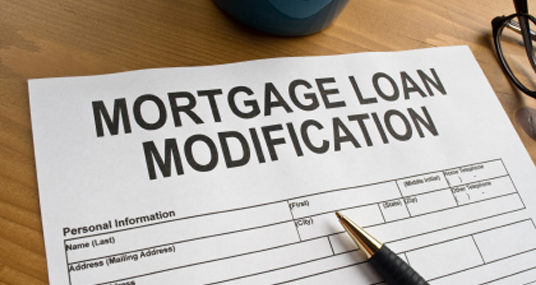Can a Mortgage Mortgage Modification Help You Avoid Foreclosure?
 To lower your monthly mortgage payment and avoid foreclosure, you can opt for a mortgage modification. To know more about mortgage modification, keep reading this post.
To lower your monthly mortgage payment and avoid foreclosure, you can opt for a mortgage modification. To know more about mortgage modification, keep reading this post.
What is a mortgage loan modification?
A mortgage modification is a change of loan agreement between a lender and a homeowner. The target of such a modification is to decrease the monthly mortgage payment. Reducing the amount of the principal, reducing interest rate, and extending the mortgage period are some ways for the lender to modify a mortgage. Besides, the lender can accommodate any overdue mortgage payments to the outstanding principal. The homeowner in default then can repay the overdue payment through a single payment schedule.
How to apply for a mortgage modification?
As soon as you find out that it would be impossible for you to make mortgage payments in time, you should contact the loan provider to obtain a modification. Usually, a lender’s loss mitigation department handles such decisions. A HUD-certified housing counselor can provide you free advice and help you work out a modification with the lender. Before paying someone for their consultancy service, thoroughly scrutinize their legitimacy.
Submitting a mortgage modification application package
Lenders generally ask for some documents to verify whether you qualify for a modification. An affidavit or hardship letter explaining your unique circumstances is necessary. In the letter you will have to prove that you are able to pay the newly proposed mortgage amount.
You have to add some financial documents proving your present hardship and ability to pay back the new amount. Generally, documents like paycheck stubs, copies of tax returns, and a list of assets and debts are necessary. Do not forget to clearly label each page of your application with your loan number and name. Moreover, copy everything you send to the lender for assessment.
Make sure that you use a single channel to communicate with your lender.
You are more likely to be assigned a single representative to deal with your loss mitigation process. Under the Making Home Affordable guideline, it is mandatory that loan services assign “relationship managers” to work as a single line of communication with a particular applicant during the HAMP evaluation process. The relationship manager will remain in touch with you during the entire process. In case of a rejection of a loan modification application, the relationship manager has to inform you about the foreclosure status. Although at the moment this is applicable only to large servicers, the US Treasury encourages all servicers, regardless of their size, to maintain a single point of contact all the way through.
If you have sent all documents to the servicer already, ask to verify whether they got all necessary papers to commence the process. Contact them on a weekly basis to check the current status of your application. And every time you contact them, keep careful note of the important details.
What to do if your loan modification request is rejected?
Even when your mortgage loan modification application is denied, foreclosure is not inevitable; you can explore other options at hand like bankruptcy, short sale, foreclosure in court, and deed in lieu of foreclosure.